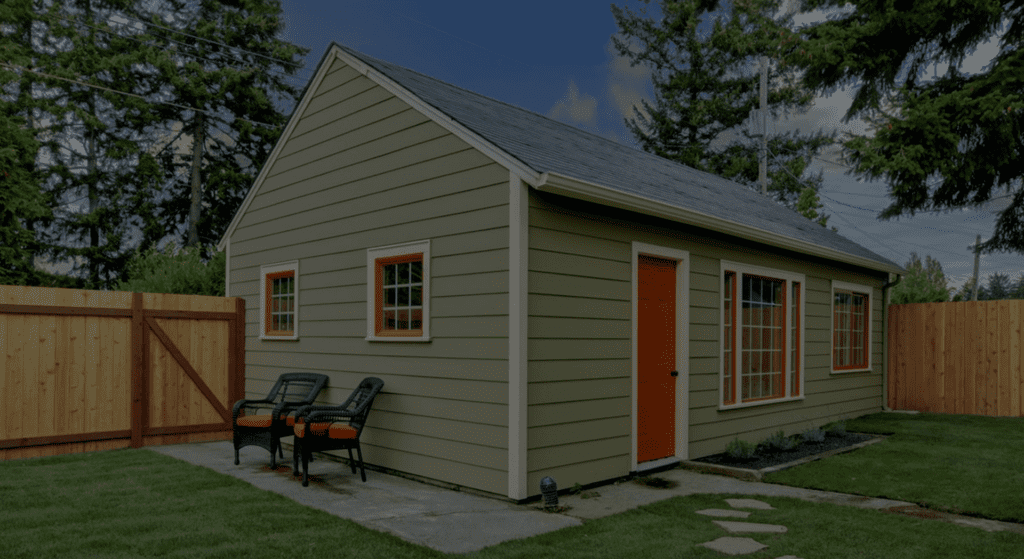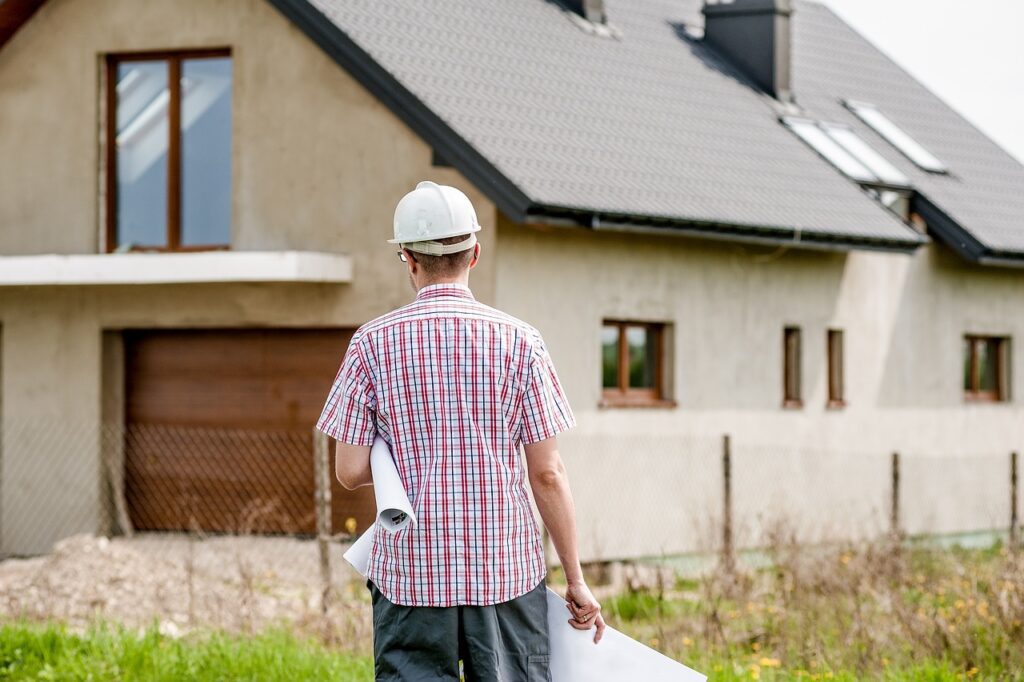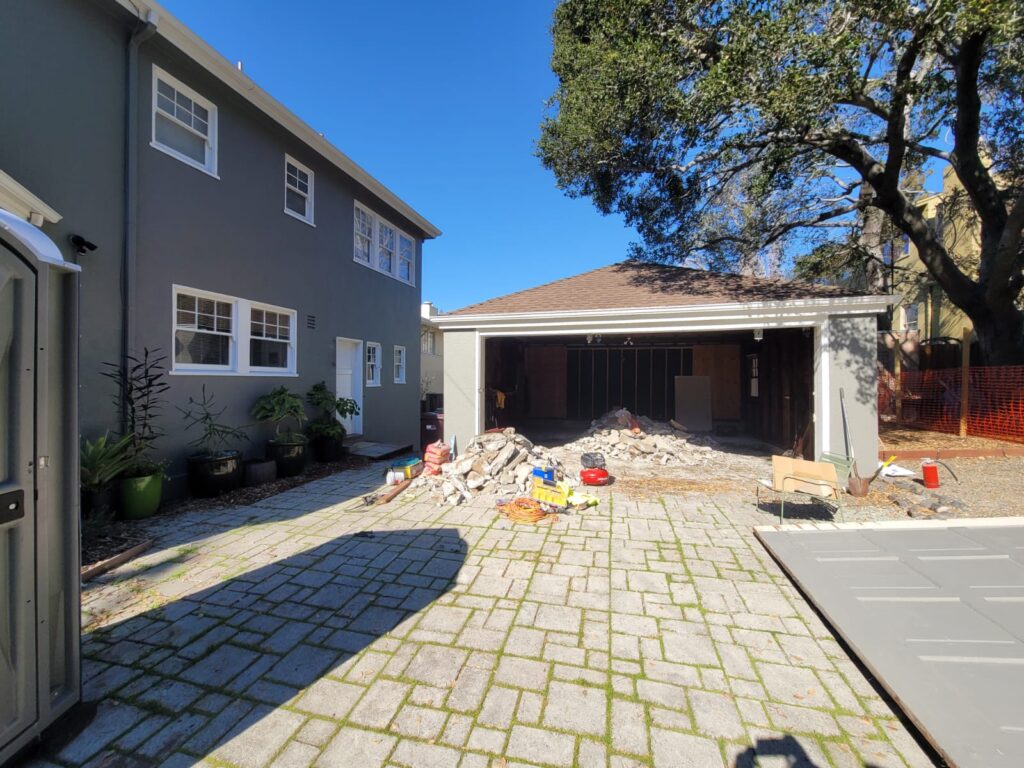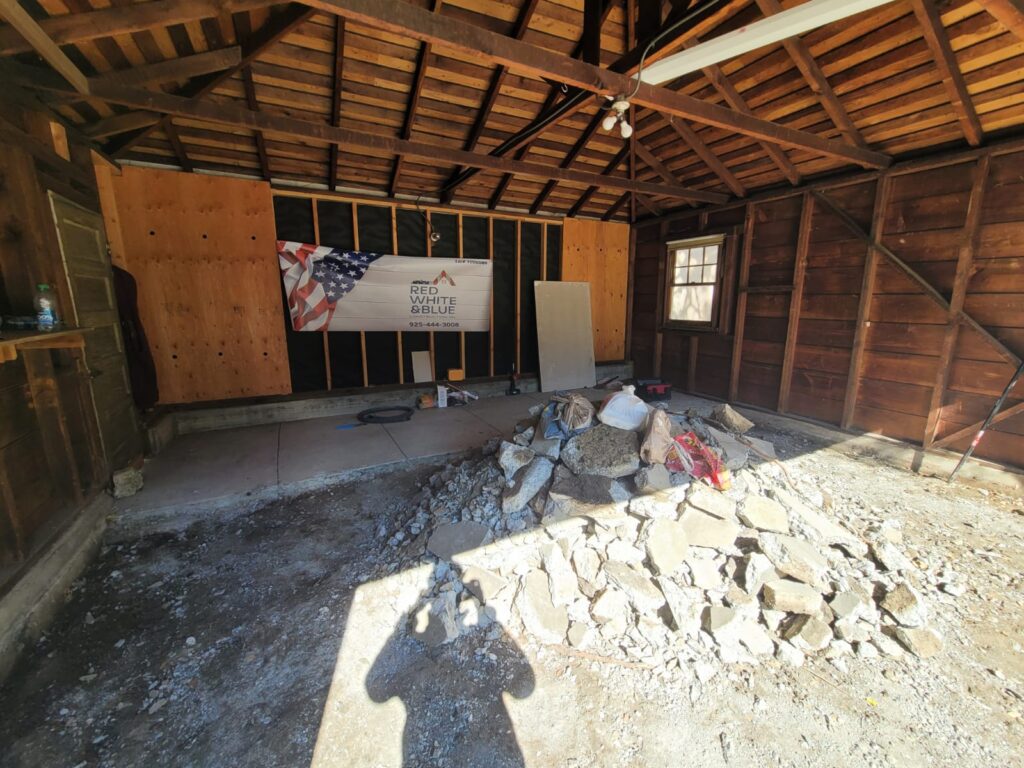Detached ADUs are gaining popularity in urban areas, offering homeowners the flexibility of additional space without compromising privacy. Unlike traditional ADUs, detached units provide a standalone living solution, ideal for those seeking independence or rental income. The rise in detached ADU demand can be attributed to their versatility and adaptability to diverse housing needs, making them a preferred choice for urban dwellers looking to maximize their property’s potential.
As urban spaces become more crowded, detached ADUs offer a practical solution for expanding living quarters without extensive renovations. Their standalone nature provides a contrast to attached units, offering a sense of autonomy and distinctiveness. This trend underscores a shift towards innovative housing solutions that cater to modern lifestyle preferences.
Understanding ADUs
What ADUs Are
Accessory Dwelling Units (ADUs) are secondary housing units on a single-family residential lot. They provide additional living space while maintaining the primary residence’s integrity. Detached ADUs have separate entrances and utilities, offering occupants independence and privacy. Urban planning increasingly recognizes the value of ADUs in addressing housing shortages.
Types of Detached ADUs
Various styles of detached ADUs exist, such as backyard cottages, converted garages, and tiny homes. Homeowners appreciate the architectural flexibility of detached ADUs, allowing customization to suit individual preferences. Size and design regulations for detached ADUs vary among municipalities, influencing their popularity and feasibility.
Differences from Other Housing
Detached ADUs differ from traditional single-family homes in size and purpose. They offer a unique blend of privacy and proximity to the main residence, catering to diverse living arrangements. Detached ADUs also boast a lower environmental impact compared to larger housing developments, contributing to sustainable urban growth.
Rising Popularity Factors
Demographic Shifts
Urbanization trends drive demand for ADUs among younger populations seeking affordable housing solutions. Aging individuals favor ADUs for downsized living arrangements that offer independence and accessibility. Remote workers are increasingly attracted to ADUs for flexible living spaces that cater to their work-from-home needs.
Increasing Housing Costs
Rising homeownership costs propel the popularity of ADUs as an affordable housing option in urban areas. Families benefit from ADUs by creating additional living space, easing financial burdens. ADUs play a crucial role in stabilizing rental markets amidst escalating housing prices, providing more options for tenants.
- Families benefit from additional living space
- ADUs stabilize rental markets amid rising prices
Sustainable Living Solutions
ADUs offer environmental benefits like reduced land use and lower carbon footprints, contributing to sustainable urban development. By increasing density without urban sprawl, ADUs promote efficient land utilization. Construction using eco-friendly materials and designs further enhances the sustainability aspect of ADUs.
- Reduced land use and lower carbon footprints
- Eco-friendly materials promote sustainability
Work-from-Home Trends
The growing trend of remote work highlights the need for dedicated workspaces within residential settings. Detached ADUs serve as ideal home offices, providing a quiet environment away from household distractions. The versatility of ADUs allows for customization to adapt to evolving work environments and individual needs.
- Detached ADUs provide quiet workspaces
- Customizable ADUs cater to changing work needs
Benefits for Homeowners
Generating Additional Income
Homeowners can benefit from renting out their ADUs, generating extra income to offset expenses. ADUs offer a financial opportunity by providing a space for short-term rentals on platforms like Airbnb. This additional income stream can help homeowners cover mortgage payments or save for future investments.
- Renting out ADUs allows homeowners to earn extra income.
- ADUs offer a financial opportunity through short-term rentals.
- Supplemental income from ADUs can contribute to financial stability.
Multigenerational Living
Families are increasingly opting for multigenerational living arrangements in separate but adjacent spaces, with ADUs enabling this trend. Homeowners can maintain privacy and independence while living close to their extended family members. The shared resources and support systems in multigenerational households foster strong family bonds and enhance the quality of life.
- ADUs facilitate multigenerational living arrangements.
- Multigenerational households benefit from shared resources.
- Families living in separate spaces maintain privacy while staying connected.
Increasing Property Value
Adding an ADU to a property can significantly boost its market value, offering a high return on investment for homeowners. Prospective buyers are attracted to properties with ADUs, especially in competitive real estate markets. The appeal of ADUs lies in their versatility and potential for additional rental income, making them desirable assets for homeowners looking to increase their property’s value.
- ADUs enhance a property’s market value significantly.
- Properties with ADUs attract prospective buyers in competitive markets.
- The versatility of ADUs appeals to homeowners seeking increased property value.
Addressing Housing Shortages
ADUs play a vital role in addressing housing shortages in urban areas by increasing the overall housing supply. They provide affordable housing options for low-income families, contributing to community development and revitalization efforts. By utilizing underutilized spaces, ADUs offer a sustainable solution to housing challenges and help create more inclusive neighborhoods.
- ADUs contribute to increasing the overall housing supply in urban areas.
- Affordable housing options are provided for low-income families through ADUs.
- Utilizing underutilized spaces helps revitalize neighborhoods facing housing shortages.
Financing Options
Mortgage Options
Specialized financial assistance options are available for building ADUs, such as loans tailored for this purpose. Understanding local lending practices and requirements is crucial when considering financing for ADUs. Government incentives or grants can also play a significant role in facilitating ADU construction for homeowners.
State Programs
State-level initiatives play a vital role in supporting ADU development through funding and policy changes. States like California have been at the forefront, introducing legislation to promote and streamline the construction of ADUs. These programs are essential in addressing the growing need for affordable housing solutions across urban areas.
Local Programs
Local government initiatives offer resources and incentives to encourage ADU development within communities. Through workshops and informational sessions, homeowners can gain valuable insights into the benefits and processes of constructing ADUs. Successful case studies demonstrate how local programs have effectively boosted ADU construction rates, contributing to the rise in popularity of detached ADUs in urban settings.
Future Trends in Housing
Urban Development
Detached ADUs are revolutionizing urban landscapes by offering innovative housing solutions. These units impact urban density by providing additional living spaces within existing neighborhoods. Cities strategically integrate ADUs into their planning to address housing shortages efficiently.
ADUs play a crucial role in meeting the increasing demand for housing without extensive new developments. By utilizing existing land and infrastructure, cities can accommodate more residents sustainably. This approach promotes community growth while preserving the urban fabric.
The integration of ADUs contributes to creating vibrant, mixed-use neighborhoods. These spaces enhance neighborhood vitality by accommodating diverse populations. Residents benefit from access to various amenities and services within walking distance, fostering a sense of community.
Policy Changes
Recent legislative changes have streamlined the process of building ADUs, promoting their widespread adoption. These changes simplify regulations and permit requirements, making it easier for homeowners to add ADUs to their properties. As a result, more individuals are exploring the option of building ADUs as a viable housing solution.
Advocacy groups have played a pivotal role in advocating for favorable ADU policies at the local and state levels. Their efforts have led to policy reforms that support ADU construction and encourage innovative housing solutions. Continued collaboration between advocacy groups and policymakers is essential to further enhance ADU accessibility.
Ongoing policy discussions are crucial for sustaining the growth of ADUs in urban areas. By addressing zoning restrictions, parking requirements, and other regulatory barriers, policymakers can create an environment conducive to ADU development. These discussions aim to ensure that ADUs remain an integral part of urban housing strategies.
Technological Advances
Advancements in construction technology have made building ADUs more accessible and cost-effective. Modern construction techniques allow for faster and more efficient ADU construction, reducing overall project timelines. This technological progress enables homeowners to add ADUs to their properties with greater ease.
Smart home technology plays a significant role in enhancing the functionality of ADUs. From energy-efficient appliances to automated systems, smart home features improve comfort and convenience for ADU residents. These technological advancements elevate the overall living experience in detached ADUs.
Innovative design solutions are transforming the way ADUs are constructed, maximizing space utilization and efficiency. Architects and builders are incorporating creative design elements to optimize living areas within compact structures. These design innovations ensure that ADUs offer comfortable and functional living spaces for residents.
Final Remarks
As you’ve seen, the surge in detached ADUs’ popularity stems from various factors like increased housing demand, financial benefits for homeowners, and evolving urban landscapes. The flexibility and additional income streams these units offer have made them a sought-after choice for many property owners. Exploring financing options and staying updated on future housing trends can further solidify your decision if you’re considering integrating an ADU into your property.
Incorporating a detached ADU can not only enhance the value of your property but also provide you with a versatile living space or rental opportunity. Stay informed about local regulations, financing possibilities, and design innovations to make the most out of this housing trend. Your proactive approach can lead to a rewarding investment in your property’s future.
Frequently Asked Questions
1. Why are detached ADUs becoming increasingly popular in urban areas?
Detached ADUs are gaining popularity due to the demand for additional living space, rental income opportunities, and housing flexibility. They offer homeowners a chance to maximize property value and address changing housing needs efficiently.
2. What benefits do detached ADUs offer to homeowners?
Detached ADUs provide homeowners with extra income from rentals, increased property value, flexible living arrangements for family members or guests, and potential caregiving solutions. They also offer a way to utilize underutilized space on their property effectively.
3. How can homeowners finance the construction of detached ADUs?
Homeowners have various financing options available for building detached ADUs, including home equity loans, cash-out refinancing, personal savings, construction loans, and ADU-specific financing programs. Each option comes with its own set of requirements and benefits tailored to different financial situations.
4. What are some future trends in housing that involve detached ADUs?
Future housing trends suggest an increase in sustainable and affordable living solutions, which align well with the concept of detached ADUs. As urban areas face growing population density and housing demands, detached ADUs offer a practical and scalable solution to address these challenges.
5. How can homeowners stay updated on the regulations and guidelines related to detached ADUs?
Homeowners can stay informed about detached ADU regulations by regularly checking local zoning laws, attending community planning meetings, consulting with architects or contractors experienced in ADU construction, and exploring online resources provided by government agencies or housing organizations.

Revitalize Your Property with Expert Detached ADU Installations by Red White & Blue Construction!
Dreaming of adding a stylish and functional detached accessory dwelling unit (ADU) to your property in Lafayette, CA? Red White & Blue Construction is here to make that dream a reality with our top-notch ADU installation services! Our team excels in detailed planning and precise execution, ensuring your detached ADU perfectly matches your vision. Specializing in detached ADU installations, we’re dedicated to enhancing your property with a modern, versatile living space. Our outstanding reputation throughout the Bay Area reflects our unwavering commitment to quality, precision, and excellence in every project phase.
At Red White & Blue Construction, we believe in enhancing more than just your property; we aim to elevate your entire home renovation experience. With meticulous planning, transparent pricing, and exceptional customer service, choosing us for your ADU installation means embarking on a seamless and enjoyable renovation journey. Let Red White & Blue Construction handle all your detached ADU needs and take the first step toward a more elegant and functional living space. Contact us today to get started!
Disclaimer
The materials available on this website are for informational and entertainment purposes only and not to provide advice. You should obtain advice concerning any particular issue or problem from a professional. You should not act or refrain from acting based on any content included in this site without seeking legal or other professional advice. The information presented on this website may reflect only some of the current building developments. No action should be taken in reliance on the information on this website. We disclaim all liability concerning actions taken or not taken based on any or all of the contents of this site to the fullest extent permitted by law.





